Review| The Hateful Eight
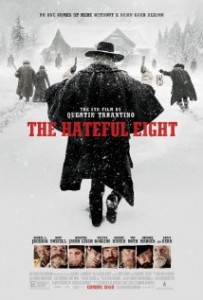 “We still have a long way to go, but hand in hand I know we’ll get there.” -Abraham Lincoln (via letter in the film The Hateful Eight)
“We still have a long way to go, but hand in hand I know we’ll get there.” -Abraham Lincoln (via letter in the film The Hateful Eight)
Any movie that tries to speak to all of the problems with the current picture of racism in America tends to fall short. Any review that looks at how those movies speak to that racism tend to fall short as well, but someone ought to do it. I remember when Django Unchained (2012) came out and people began to riot a bit about Tarantino’s continued use of vulgar racial slurs in his films. He’s never shied away from their usage, but every time he’s been asked about it, he says it’s only to drive home the deep disgust he has for them.
Late December’s release of The Hateful Eight is no different from his previous endeavors, seeking to cross these racially correct lines and tell a story from long, long ago while showing insight into our views today. The film is gorgeous, though shot in no more than three or four locations, and tells the whodunit story of eight men (bounty hunters, ex-servicemen, and criminals) who arrive at a Wyoming way station during a blizzard. Set shortly after the Civil War, tensions are incredibly high in the tavern. Early on a character even suggests splitting the room into northern and southern halves so that fighting would not ensue.
Racism and hatred have a way of making fights happen though. To call any character in this story a protagonist might be a bit of a stretch, but I think it’s worth noting that I was definitely routing for the unlikely team of Marquis Warren (Samuel L. Jackson) and Chris Mannix (Walton Goggins). I won’t delve too much deeper into the story of The Hateful Eight, but to tell you that like most of Tarantino’s other films, it features a lot of gratuitous deaths and disgusting language. I truly enjoyed this film (though not as much as I do some of Tarantino’s others) because the picture it paints so similarly resembles the current climate and tension around issues of race that we see in our country today. Obviously, setting this right after the Civil War exaggerated some of the emotions and actions taken by characters in the film, but I think it’s fair to say that even though our climate is currently a bit more subtle, there is still a huge amount of hate and hurt on both sides of this issue.
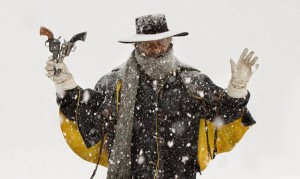 I hate to stand up on a soapbox in a review about a movie that does it so much better than I, but I’ll do it anyways to say that whether we see or believe in it, the racism and hatred shown in this movie (again, to an admitted and exaggerated degree) is alive and growing across the world. Tarantino recognizes that. He recently denounced those who would still fly a Rebel flag in this nation and he has no problem speaking out against actions that he finds disgraceful or divisive. Not only is he vocal, but in his films, he often makes his point by making us, the audience, shudder a bit. His films force us to ask the question, “Where do we stand in the discussion?” I think it’s very, very easy to ignore these issues, but I sincerely believe that if we don’t choose a more compassionate path, our children and grandchildren will likely one day look back, ashamed of that lack of love and grace (or the Gospel) in us.
I hate to stand up on a soapbox in a review about a movie that does it so much better than I, but I’ll do it anyways to say that whether we see or believe in it, the racism and hatred shown in this movie (again, to an admitted and exaggerated degree) is alive and growing across the world. Tarantino recognizes that. He recently denounced those who would still fly a Rebel flag in this nation and he has no problem speaking out against actions that he finds disgraceful or divisive. Not only is he vocal, but in his films, he often makes his point by making us, the audience, shudder a bit. His films force us to ask the question, “Where do we stand in the discussion?” I think it’s very, very easy to ignore these issues, but I sincerely believe that if we don’t choose a more compassionate path, our children and grandchildren will likely one day look back, ashamed of that lack of love and grace (or the Gospel) in us.
We are called, as people of a just and loving God, to see the injustice in the world and act out against it. I think, for far too long, we have only spoken out against such injustice and not acted, in love. Seek the good of your cities and its citizens. Walk in love and justice. Sure, the conclusions in The Hateful Eight are not Gospel, but the inciting actions are still very real. Is Tarantino too heavy-handed? Maybe. Not heavy-handed enough? Probably.


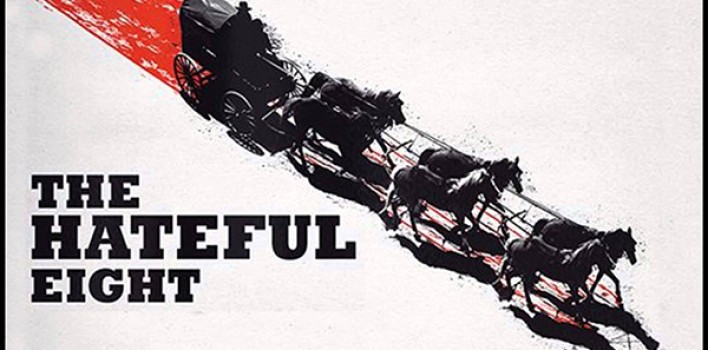
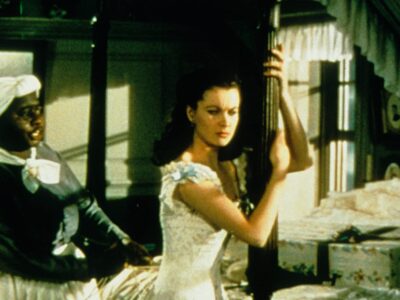

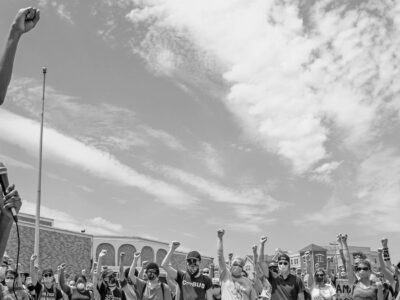


Pingback: #087 – The Hateful Eight and The Stories We Tell | Reel World Theology